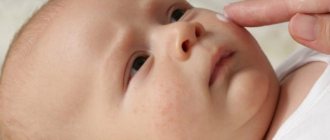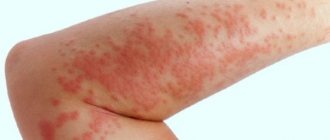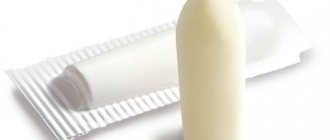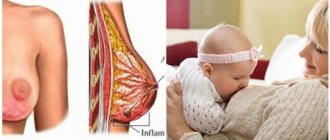The problem of the formation of allergic rashes in a newborn always worries the mother, but the main difficulty of this issue is always to identify the reasons that provoke the reaction. It can be caused by food or household factors. If a mother feeds her baby with breast milk, an allergy occurs due to the products she consumes while bottle-feeding, a reaction occurs in response to the use of infant formula. The treatment regimen is always determined by a pediatric allergist. The doctor will tell the mother whether it is possible to bathe the child if an allergic rash appears, help determine the menu and select medication treatment. The main difficulty is that children are prohibited from using many medications.
Factors that cause allergies
The factor that can cause a negative reaction in a child varies. The most common option is food allergies. Moreover, the products can be consumed by both the baby and the mother. Do not forget that along with milk, every element of food that the nursing mother ate enters the baby’s body. Therefore, it is important to monitor your diet while breastfeeding.
The following are the causes of allergies:
- Abuse of allergenic foods by a nursing mother (citrus fruits, chocolate and other sweets, baked goods, eggs, etc.). Recommended menu for breastfeeding in the section on nutrition for nursing mothers;
- Cow protein and early transfer of an infant to artificial feeding with cow's milk, infant formula or kefir. When and how to introduce complementary foods, read the article “Scheme and diet of the first complementary foods”;
- Heredity;
- Medicines used by mother or baby;
- Adverse environmental influences;
- Viruses, vaccines and vaccinations;
- Products introduced into complementary foods. Read here what can and cannot be given to an infant;
- Cosmetics and household chemicals (creams and powders for children, soap and washing powder);
- Household allergens (animal hair and plant pollen, house dust and feather pillows).
Many children suffer from an allergic reaction in the first weeks of life. So, in the first 20 days after birth, the child develops a skin rash. The reason for this phenomenon may be the mother’s hormones, which the baby receives in the womb. The body adapts to new conditions, resulting in the formation of small red spots on the face and neck. This rash goes away on its own within three to four weeks.
Typical allergy symptoms, in addition to rashes, include redness, roughness and dryness of some areas of the skin. Additional symptoms are also identified, including green stool, coughing and sneezing, runny nose and severe itching. Let's take a closer look at what allergies look like in infants.
Causes and symptoms
A nettle rash on the skin of an infant is a consequence of thinning of the capillaries under the influence of the release of histamine into the blood. Upon contact with an allergen, the concentration of histamine increases, the walls of blood vessels become fragile, and intracellular fluid begins to pour into the epidermis. This is how characteristic rashes form.
In infancy, the most common cause of urticaria is food allergies - this is how a child can react to complementary foods or new foods in the diet. Sometimes urticaria develops as a form of contact allergy - the skin of infants is very thin and delicate, and even the wrong powder for washing baby clothes can cause a rash.
A baby’s skin may develop urticaria to a vaccination, or more precisely, to vaccine components, to insect bites, or to the friction of a diaper or the seams of clothing.
It is difficult to confuse hives with something else, because unlike other allergies, diaper rash, prickly heat, it appears quickly, literally in a matter of minutes. The blisters are pink and numerous. They are almost never isolated. If the baby has single individual blisters, then an infection should be suspected, not urticaria.

Not only does hives appear quickly and look like a burn from the plant of the same name, but it also goes away quickly. As soon as the concentration of histamine in the blood begins to decrease, the rash also disappears. Neither diaper rash nor infection goes away so quickly. This is the main symptom of the pathology.
The rash with nettle fever (this is the second name for urticarial dermatosis) is itchy and itchy. There is slight swelling around the blisters. If the rash appears exclusively on the face or hands, then the general condition does not suffer. If the rash is extensive, a rise in body temperature is possible.
An infant with widespread, extensive urticaria experiences difficulty falling asleep, is capricious, and has disturbances in appetite and stool. Urticaria in infants is often called strophulus. With it, the blisters are small, not exceeding 3 millimeters, with a small bubble at the top.
With the development of giant urticaria, laryngeal edema (), as well as other forms of edema, are formed. In this case, the child has difficulty breathing and needs urgent medical attention. Before the ambulance arrives, parents must provide the child with a supply of fresh air.
Toxic urticaria from contact with chemicals or strong allergens develops quickly, the rash spreads rapidly.
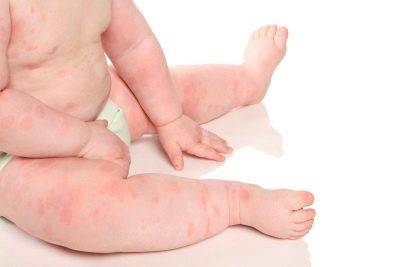
How does an allergy manifest?
Allergies manifest themselves in different ways. This depends on the type of allergen and the individual developmental characteristics of the child. Depending on the type of reaction, the symptoms of the disease are distinguished. The following types of allergies are distinguished:
- Atopic types affect the skin, eyes and nasal cavity, sometimes the lungs. This category includes dermatitis, urticaria, various edema and allergic lung diseases (asthma, pneumonitis, etc.). Children with such problems may have uneven weight gain and increased persistent diaper rash;
- Infectious types occur due to bacteria and fungi. Typical symptoms include skin manifestations, runny and congested nose, cough and watery eyes, swelling and malaise, and in arthritis, joint pain and fever in the affected areas.
There are other options for what allergies look like in infants. After all, each child has an individual reaction. In a baby, negative manifestations can occur not only in the respiratory system and on the skin. The reaction can also manifest itself in the intestines. These are bloating and abdominal pain, diarrhea and other problems with stool, regurgitation and vomiting. In this case, problems arise in weight gain.
Please note that red cheeks do not always indicate an allergy. Red cheeks are typical symptoms of diathesis, which is a borderline state between an allergic disease and a healthy state. As a rule, diathesis occurs due to the consumption of certain foods.

When does the allergy go away?
Rashes and redness of the skin begin 1-1.5 hours after interaction with the allergen. Food allergies from the intestines appear within two days. That is why, when introducing a new product into the diet, nursing mothers are advised to monitor the newborn’s reaction for two days.
How long a baby’s allergy lasts depends on several factors. First of all, this is contact with the allergen and the types of reaction. If you eliminate the pathogen immediately, the reaction will go away within a few hours. But it is not possible to quickly eliminate a reaction to food, since it takes time for digestion, complete elimination of the product from the body and subsequent rehabilitation. Allergy symptoms after eliminating the pathogen from the menu during breastfeeding will last for another two to three weeks. The time depends on the amount of food taken.
The duration is also influenced by the effectiveness and efficiency of treatment, the state of immunity. The stronger the immune system in children, the faster the body will cope with the disease.

Baby care

Komarovsky draws the attention of parents to the fact that manifestations of food allergies are always intensified under the influence of external negative factors - hot, dry air and skin contact with chemicals. Without eliminating them, drug treatment will not produce results.
The doctor gives the following recommendations:
- Maintain the room temperature no higher than 20 °C and humidity no lower than 50%, remove all dust accumulations, regularly ventilate and clean
- bathe the baby in non-hot water, having previously cleared it of chlorine using filters and boiling
- use a minimum of household chemicals, rinse children's clothes thoroughly
- use only hypoallergenic cosmetics and detergents designed specifically for babies
- put on the child things made from natural fabrics of a dull color, the same applies to bedding
- buy quality toys, since inexpensive materials are often very toxic
- if the baby is sick, treat him with products without dyes and sweeteners
- When purchasing products, analyze the conditions in which they were grown or produced
- Avoid buying pets until your child’s allergies go away
Food allergies in infants are not a lifelong sentence. In 98% of children it goes away with age. If you study the thematic forum, you can conclude that many parents notice an improvement in symptoms by 3-5 years. The reason for this is the maturation of enzyme systems, liver and intestinal microflora, as well as strengthening the barrier functions of the skin. But this condition must be treated with diet and proper child care. Allergies that are left unattended are dangerous because they can develop into atopic dermatitis or bronchial asthma.
How to help your baby
When a child experiences an allergic reaction, parents immediately wonder what to do and how to treat it. The skin rash that appears in the first weeks due to the mother's hormones will go away on its own. In this case, treatment is not necessary. Do not remove or treat red spots with cotton swabs! This will cause the spots to spread throughout the skin throughout the body.
If the allergy is not caused by hormones, then treatment should begin with a diet. Eliminate allergenic foods from your diet. You should not take various medications and medications for children, as self-medication can only worsen the child’s condition! To determine the type of allergy, consult your doctor. Only a specialist can prescribe the correct treatment!

Common allergens
It is possible to determine which irritants cause a reaction in a child using a special procedure in a hospital setting. This will allow you to exclude the product and not provoke unpleasant symptoms.

Food allergies to seeds can occur due to the content of substances such as albumin and globulin.
Allergies occur most rarely to sunflower and pumpkin seeds. But this is the case if the kernels are raw or well-dried. Pumpkin seeds can cause allergies if the body reacts to the vegetable itself. If a reaction to sunflower seeds develops sharply, then the reason may not be in them. The vegetable oil used for frying can cause unpleasant symptoms.
Most often, a child is allergic to sesame seeds. The seeds contain proteins, which become a source of irritation. The situation is aggravated by various diseases of the liver, pancreas and gall bladder.
Flaxseeds are not used as food, but they are used to make oil. Dishes to which flaxseed oil has been added can lead to serious allergic consequences. It should be limited or completely avoided by pregnant and lactating women. And even more so, you can’t add it to your first complementary foods.
Prunes can also cause allergies. Most often this is due to improper processing. Wax, glycerin and other fats are used to give the dried fruit a marketable appearance. Weakened immunity and individual intolerance to the body are also common causes of reactions to prunes.
Allergy to prunes occurs rarely and occurs in a mild form, for example, the cheeks turn red. In this case, you should not add prunes during cooking, or give them raw to your child.
There is a risk of cross-allergy to prunes if there has already been a reaction to plums, cherries, or apricots.
If the child is breastfed, then prunes can be consumed by the mother herself, as the product is useful for intestinal motility.
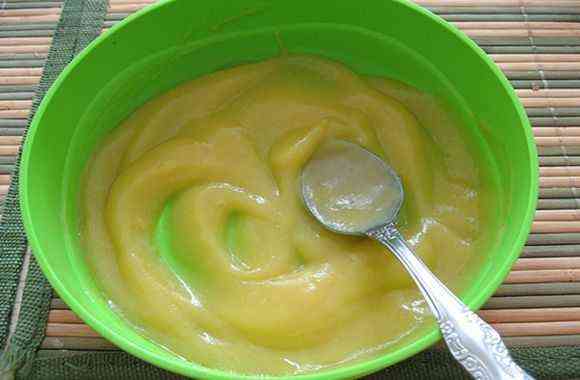
Zucchini is a hypoallergenic product. This is where the first complementary foods begin. But sometimes there are cases of developing an allergy to zucchini.
There may be several reasons why a reaction to zucchini develops. The hereditary factor plays an important role. If at least one of the parents suffers from such a problem, then the situation will repeat with the child. An allergy to zucchini can occur against the background of an infectious disease or diseases of the digestive system. The risk of developing a reaction increases when feeding a child with formula.
The most common first foods are porridge. They can be cooked from various grains. What cereals are recommended as first complementary foods? Doctors recommend corn or rice porridge. There may be several reasons for an allergy to porridge:
cow's or goat's milk protein; gluten content in grains (barley, wheat, oats, rye); adding fruits, dried fruits, vegetables (for example, prunes, dried apricots, zucchini); adding sugar.
It is better to leave milk porridges for the period when the child turns one year old. For now, all porridge should be cooked in water.
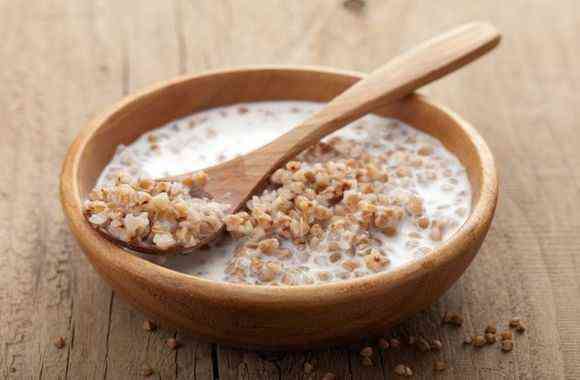
The very first cereal that a baby is introduced to should be buckwheat. It is hypoallergenic as it does not contain gluten. An allergy may occur to buckwheat in an infant due to the content of plant proteins (globulin, albumin). A reaction may develop to buckwheat porridge that your mother ate.
Corn porridge is recommended as first complementary foods, as it does not contain gluten. But it can also cause unpleasant symptoms. If you bought corn porridge in a store, then an allergy may appear to all kinds of additives: sugar, milk, pieces of any fruit. A true allergy to corn porridge occurs if the cereal was prepared at home with water, without adding oil or sugar.
Rice is a healthy grain that can be used to make delicious dishes, such as rice porridge. It contains many useful substances, including vitamins and microelements. The body is enriched with complex carbohydrates, which are quickly absorbed by the body, giving energy and strength.
Rice very often causes allergies in children. There are several reasons why this happens.
Adverse reactions to rice often have a hereditary predisposition. Rashes and other signs may occur due to the fact that rice is too often included in the infant's diet. For example, during the day the child received rice porridge and a mixture of rice flour. Rice has a fixing effect and constipation develops. As a result, toxins begin to accumulate in the body, which cause various unpleasant symptoms. Rice is gluten free. But its grains contain a large amount of proteins, including pollen proteins.

Butter, which is sometimes added to cereals, also causes unwanted reactions. Butter is made from cow's milk, which contains allergenic proteins (casein, lactoglobulin, lactalbumin). These components do not disappear even during heat treatment.
You cannot add other types of oils to dishes for children under one year old: palm oil, sea buckthorn or sunflower oil.
An allergy that occurs in response to milk in an infant is associated with lactose or protein. The risk of developing such a problem increases if the mother herself suffers from this type of allergy or had various pathological conditions while carrying a child (oxygen starvation of the fetus, threat of miscarriage, bad habits).
Fermented milk products rarely cause allergies. Bacteria partially process the protein, and it is better absorbed by the child’s body. Fermented milk products are indicated as first complementary foods, but only those that have a short shelf life.
An infant may also develop an allergy to sugar. It most often enters the body through breast milk. A provocative factor is the incorrect diet of a nursing mother, decreased immunity, and dysbacteriosis.
How to help your child with allergies:
- A hypoallergenic diet, which doctors advise every mother to use in the first 1-1.5 months of lactation. Such nutrition will reduce the risk of an allergic reaction and help cope with an already existing illness. Read about the principles of nutrition for a hypoallergenic diet at the link https://vskormi.ru/mama/gipoallergennaya-dieta-dlya-kormyashhix-mam/;
- Cow protein is often the cause of food allergies. Eliminate such foods from your diet, especially cow's milk. The famous pediatrician Komarovsky does not recommend drinking cow's milk while breastfeeding until 4-6 months from the date of birth of the child;
- Keep your house perfectly clean. Remember that dust is a strong allergen that can cause various diseases and complications. If you have an allergy, you may have to remove soft toys, carpets and fur bedspreads from the room, which collect large amounts of dust;
- Wash items at high temperature with hypoallergenic soap or powder and rinse thoroughly. Linen is washed at least twice a week. Choose blankets and pillows with hypoallergenic synthetic filling. Often, allergies in a newborn appear due to feather bedding;
- With artificial or mixed feeding, an allergy in a newborn may be due to an incorrectly selected milk formula. If you have a negative reaction, use hypoallergenic products without cow's protein. How to choose the right formula, read the article “Rules of mixed feeding.”
If you have allergies and your baby, do not stop breastfeeding under any circumstances! After all, it is breast milk that forms and strengthens the immune system, which can quickly fight allergic reactions. Only mother’s milk fully saturates children’s bodies with essential vitamins and beneficial elements.
Remember that allergies are a disease. Therefore, if you notice symptoms, consult a doctor immediately. He will prescribe tests that will help identify the allergen. After excluding the pathogen, the symptoms of the disease decrease and gradually disappear.
It is strictly forbidden to start self-treatment and use medications! Only a specialist will correctly select medications that will quickly cope with the disease and will not harm the infant. There are various products for children.
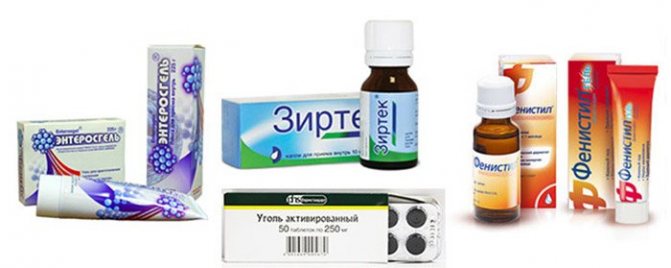
Treatment
If a mother notices that the baby does not tolerate certain foods well, the first thing she needs to do after providing emergency assistance and calling an ambulance is to show the child to the local pediatrician and specialized specialists - an allergist and an infectious disease specialist.
They will determine the causes of the illness, and, if necessary, refer you to a hospital or advise how to treat food allergies in infants at home.
The main medical recommendation is: watch your diet! For this purpose, a so-called elimination diet is prescribed, in which all foods that could, at least theoretically, cause intolerance are prohibited.
The duration of the course is at least one and a half to two years: this is the period when food allergies in infants go away completely. Then the baby can be switched to regular food.
How to calculate a provoking product? Here are the simple rules:
- Do not introduce more than one new product at a time - this way you will certainly be able to quickly understand what exactly the child cannot tolerate.
- Monitor his condition for at least an hour after eating: usually this time is enough for the onset of an allergic attack.
Home treatment: how long does it take for allergies to go away, debriefing
You called an ambulance or managed with simple home measures - an enema and Enterosgel, then showed the baby to a doctor who made an accurate diagnosis - a food allergy in the baby. How can I cure it completely so that the attacks never happen again? We would like to warn you against common mistakes.
- Some mothers, having received a doctor’s recommendation to use this or that drug, independently discontinue it ahead of schedule, when the baby feels better and all obvious signs of allergies have disappeared. Treatment must be completed to fully cope with the unusual reaction of the body. You will have to take into account that it can last up to a year, so be patient!
- Another mistake: on the advice of friends or from materials on the Internet, they try to fight diathesis rash on their own by applying hormonal ointments. Ointments and all medications in general are prescribed exclusively by a doctor - you cannot buy them yourself, cancel them ahead of time, or increase or decrease the prescribed dose.
- The third mistake is an unjustified hope for folk remedies and a panicky fear of drug treatment. You need to understand that allergies are a very complex process, which involves not only the skin and internal organs. Allergies are a powerful blow to the immune system. To bring it back to normal, special measures are required. Folk remedies are ineffective here, and diet alone is not enough. Do not refuse hospitalization if it is offered!
In conclusion
Do everything to avoid new attacks:
- Carefully study the labels on baby formulas and jars of food: they may contain allergenic components.
- Do not give your baby forbidden food, no matter how capricious he may be when asking for a treat.
- Try to feed an allergic child only yourself: other relatives or the nanny can sometimes be incredibly careless.
- If you do place your baby in temporary care when you go to work or are forced to leave, convincingly and in detail instruct those who will look after the baby what they definitely should not give him.
- Be sure to make a list of prohibited foods and place it in a visible place.
- When the baby has already begun to crawl and walk, hide any food so that he does not accidentally eat too much or harmful food.
Additional information about preventive measures for childhood food allergies in this video:
Food allergies are a serious and dangerous condition: always be on guard!
Allergy remedies for infants
| Name | Action | Age | Price |
| Activated carbon | Relieves symptoms of food allergies, restores and improves blood composition | Any age category | 45-50 rubles |
(20 pieces) Fenistil drops Relieves itching and burning, eliminates lacrimation, eliminates allergy symptoms, but causes drowsiness From 1 month, course - up to three weeks 360-400 rubles
(20 ml) Zyrtec drops (Cetirizine) Has antihistamine and anti-inflammatory effects, but has a number of side effects, including nausea, insomnia and excitability, From 6 months 200 rubles
(7 pieces of 10 mg each) Fenistil-gel Applied to the skin, but not suitable for large, inflamed or affected areas of the skin From 1 month 380 rubles (100 g) Enterosgel Paste for oral administration. Removes toxins from the body, relieves allergy symptoms and strengthens intestinal walls. Any age category 350 rubles (100 g)
Prohibited drugs for newborns
There are a number of strong drugs that quickly relieve negative symptoms and are quickly eliminated from the body. However, they pose a serious risk for infants and young children. Such drugs include:
- Suprastin;
- Diphenhydramine;
- Diprazine and promethazine;
- Clemastine;
- Tavegil;
- Fenkarol;
- Diazolin and omeryl;
- Peritol.
These drugs are addictive and have serious side effects for children. They disrupt the functioning of nerve cells and coordination in movements, causing lethargy and dizziness, lethargy and apathy. May lead to poisoning.
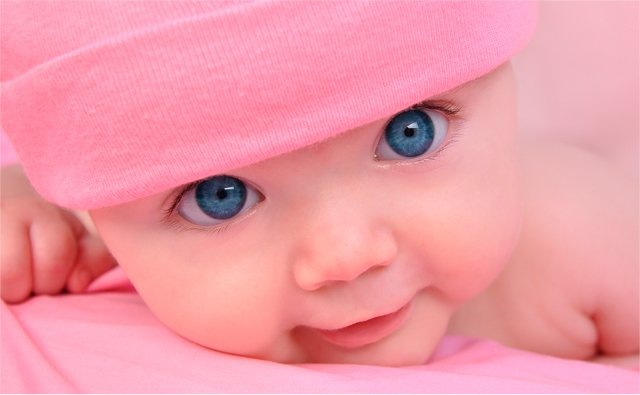
Seven ways to avoid allergies
Everyone knows that prevention is better than cure. Start preventing allergies from the very birth of your child. The following steps will help you avoid getting sick:
- Hypoallergenic diet during the first month of breastfeeding;
- In the second month after the baby is born, gradually begin to introduce new foods and carefully monitor the baby’s well-being for two days. If a negative reaction occurs, delay administration for at least four weeks;
- Follow the nutritional guidelines of a nursing mother. Drink more fluids, do not eat foods with preservatives and other chemicals. In the first months, avoid brightly colored fruits and vegetables. Introduce raw fruits no earlier than 4-5 months. Consume soups and broths, boiled and baked foods. Avoid too fatty and sweet, salty and fried foods.
- Continue breastfeeding for as long as possible. Remember that breast milk is the best prevention of diseases in young children;
- Maintain a hypoallergenic lifestyle, which includes daily wet cleaning, the absence of animals and flowers, the use of hypoallergenic hygiene products, household items (powders, etc.) and natural materials (clothing, bedding, etc.);
- Do not take medications or give medications to your baby unless absolutely necessary and without consulting a doctor;
- Lead a healthy lifestyle with your baby. Do gymnastics for children and walk in the fresh air more often. And swimming with a baby will strengthen the body, strengthen the immune system, and help avoid diseases and infections.
A nursing mother should not forget about her own health. Proper nutrition, exercise, and a healthy lifestyle will have a positive impact on the baby’s well-being.
Subscribe to our VKontakte group
